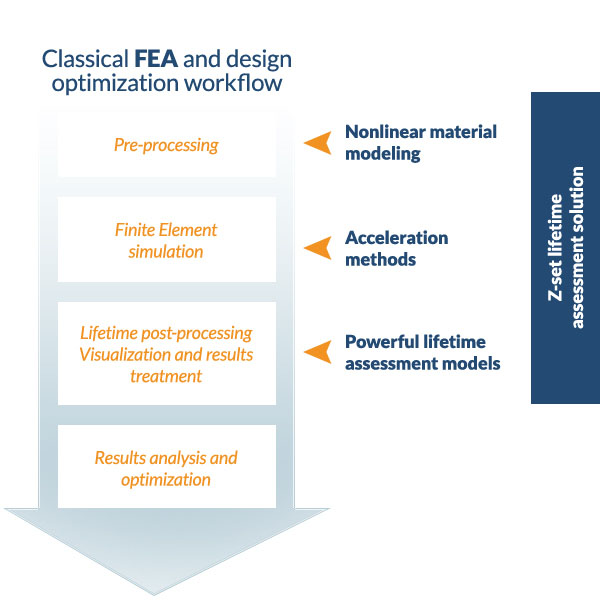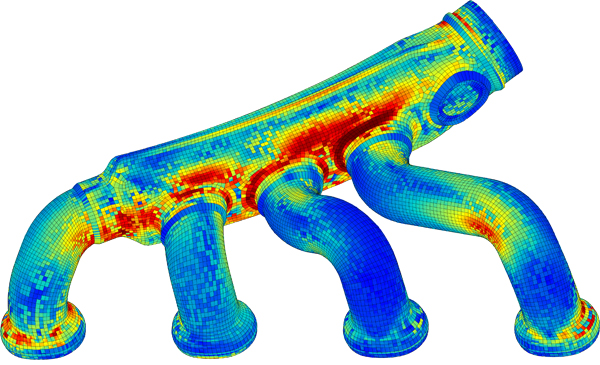The Z-set lifetime assessment solution helps structural engineers and designers to improve the reliability of its products.

The solution is intended for applications where the components operate under severe thermo-mechanical conditions involving complex deformation histories and interacting phenomena such as creep, plasticity, ageing and others.
The Z-set lifetime assessment tool-chain combines two powerful tools — Z-mat and Z-post — to enhance and steamline the design process. Monotonic and cyclic damage models are available in the code. The development of new models is an easy task.
For instance, see below an example where Z-mat material library is used to describe the visco-plastic behavior of a material under thermo-mechanical loading. Various degradation mechanisms, such as ageing or oxidation, can be coupled within the model.

After the FE simulation, Z-post lifetime estimation models are applied to post-process the results. Again, various fatigue models are available, among them the classical phenomenological Chaboche stress-based model generalized to the 3D case. It combines pure creep and pure fatigue equations, and the non-linear interaction of the previous damage mechanisms to compute the resulting lifetime. It is valid in both LCF and HCF regimes (i.e., the entire S-N curve), and takes into account the effect of non-zero mean stress. The model is coupled with an original multiaxial 3D rainflow algorithm for cycle extraction and counting.
To complete the durability analysis tool-chain, extrapolation techniques are implemented in the code. They can provide a quick estimation of the mechanical steady state, avoiding a simulation of the entire loading history.
The solution is available for Abaqus, Ansys, MSC-Marc and LS-Dyna users.